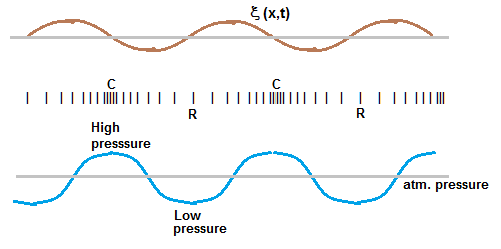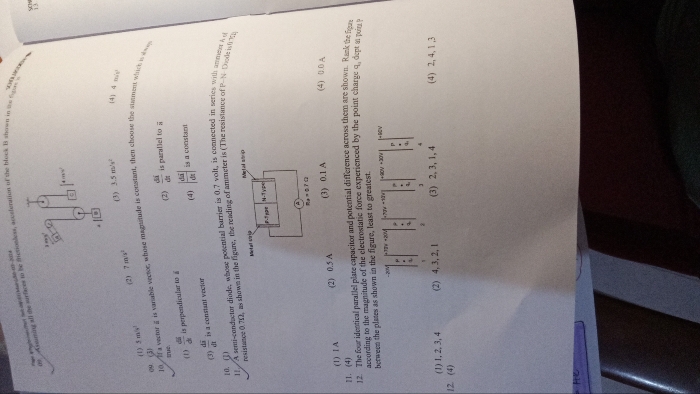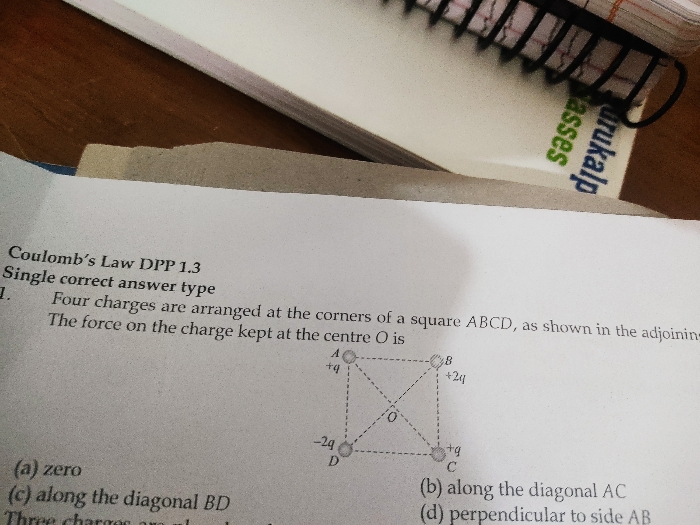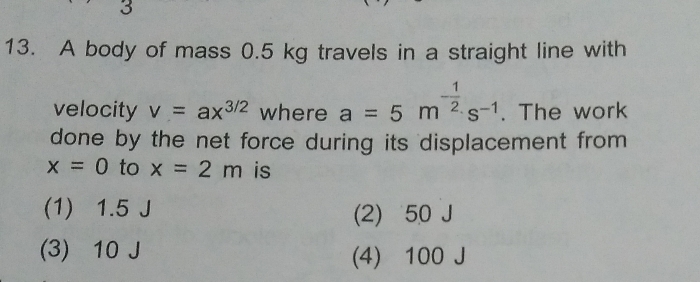JEE Class main Answered
solve

Asked by sarveshvibrantacademy | 07 Apr, 2019, 11:24: AM

Figure shows the longitudinal displacement variation of air particles along the wave propagation direction (x-axis).
Corresponding pressure variation also is shown in figure.
(A) |∂ξ /∂x|C = |∂ξ /∂x|R . This is true. At maximum compression point the slope is decreasing. At maximum rarifaction point slope is increasing.
But the magnitude of rate of change of displacement with respect to distance is same. This can be seen from figure.
(B) |∂ξ /∂t|C = |∂ξ /∂t|R = 0 . This is true. At the compression and rarifaction points, displacement of air particles is almost nil.
Hence time variation of displacement at these points also zero.
(C) PC - PR = 2 |∂ξ /∂x|C × Bulk-Modulus . This true as per the explanation given below
Let PC - PR = ΔP , change in pressure at compression point C.
2 ∂ξ is the net displacement of air particles around compression point C.
if we consider an area ΔA perpendicular to the longitudinal motion,
then (2 ∂ξ )ΔA is change in volume ΔV. original volume of air particles is ∂xΔA
Hence 

(D) Particles of air are stationary between C and R - False
Maximum displacement occurs at mid point of C and R. Hence particles of air are not stationary
Answered by Thiyagarajan K | 07 Apr, 2019, 09:05: PM
Application Videos
JEE main - Physics
Asked by ksahu8511 | 19 Apr, 2024, 11:55: AM
JEE main - Physics
Asked by mohammedimroz | 13 Apr, 2024, 09:48: PM
JEE main - Physics
Asked by medhamahesh007 | 02 Apr, 2024, 11:11: AM
JEE main - Physics
Asked by gundlasumathi93 | 31 Mar, 2024, 02:13: PM
JEE main - Physics
Asked by chhayasharma9494 | 31 Mar, 2024, 12:47: PM
JEE main - Physics
Asked by archithateja3 | 30 Mar, 2024, 10:23: PM
JEE main - Physics
Asked by Machinenineha | 27 Mar, 2024, 05:28: PM
JEE main - Physics
Asked by mfkatagi099 | 20 Mar, 2024, 09:35: PM











